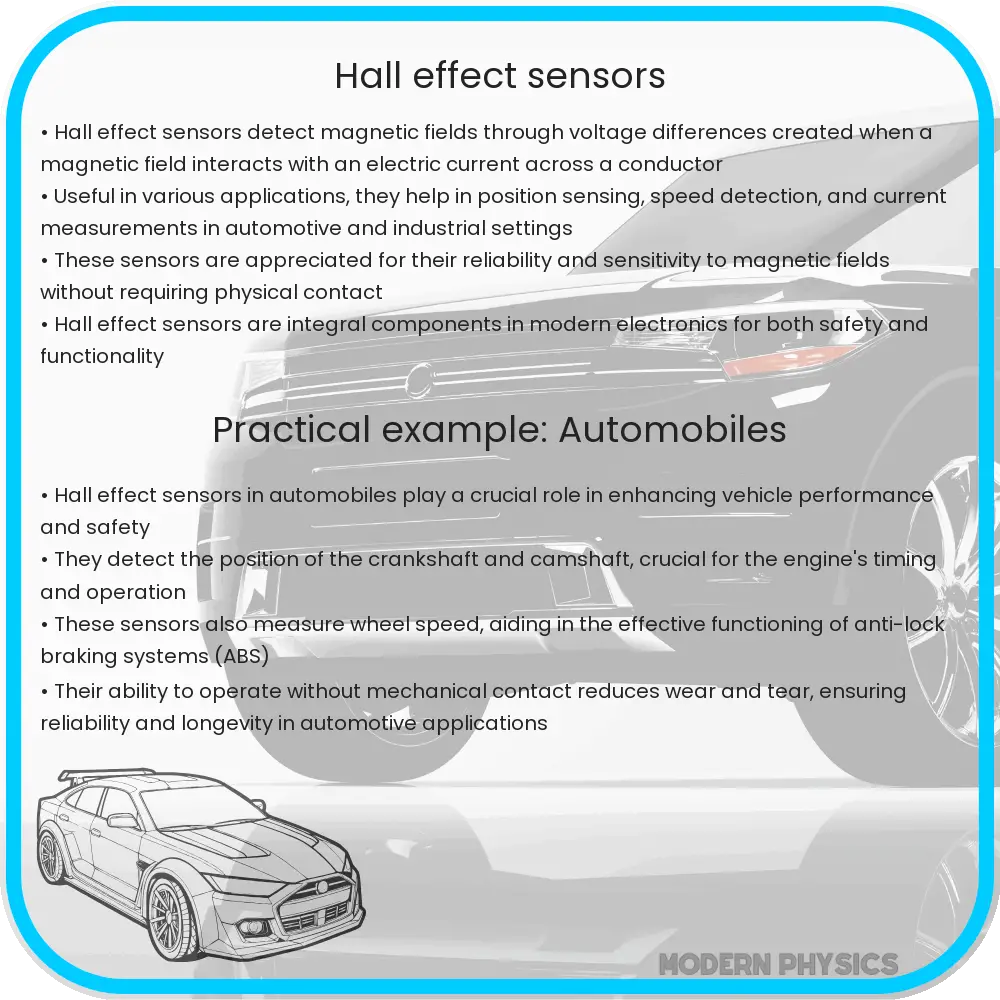Explore the precision and innovation of Hall Effect Sensors in various industries, highlighting their applications and future prospects.

Understanding Hall Effect Sensors: Principles and Applications
Hall Effect sensors have revolutionized the way we measure magnetic fields and current flow. Developed by Edwin Hall in 1879, the Hall Effect refers to the generation of a voltage difference (Hall voltage) across an electrical conductor, transverse to an electric current in the conductor and a magnetic field perpendicular to the current. This phenomenon is harnessed in Hall Effect sensors, widely used in various industries for precise and sensitive measurements.
Precision and Sensitivity in Hall Effect Sensors
The precision and sensitivity of Hall Effect sensors make them invaluable in applications where accuracy is critical. These sensors can detect minute variations in magnetic fields, translating them into voltage outputs that can be easily measured. This high level of sensitivity is achieved through advanced materials and manufacturing techniques, ensuring consistent and reliable performance.
Materials and Design Innovations
Recent advancements in materials science, such as the development of compound semiconductors like gallium arsenide (GaAs) and indium antimonide (InSb), have significantly enhanced the performance of Hall Effect sensors. These materials exhibit a higher electron mobility compared to traditional silicon, leading to greater sensitivity and faster response times.
Quantum Hall Effect and Quantum Enhanced Devices (QED)
The Quantum Hall Effect, a quantum mechanical version of the Hall Effect, has further expanded the capabilities of these sensors. This phenomenon, observed at very low temperatures and high magnetic fields, allows for the precise quantification of resistance, making these sensors ideal for standards in resistance metrology.
Quantum Enhanced Devices (QED) technology takes advantage of quantum mechanical properties to achieve even greater accuracy. In these devices, the sensitivity is not only determined by the material properties but also by the quantum state of the electrons in the material. This leads to an unprecedented level of precision in detecting magnetic fields and electrical currents.
Overall, the combination of advanced materials, innovative design, and quantum technologies has propelled Hall Effect sensors to the forefront of precision measurement tools. In the following section, we will delve deeper into the diverse applications of these sensors across various industries, highlighting their impact and future prospects.
Diverse Applications of Hall Effect Sensors
Hall Effect sensors find their application in a myriad of fields due to their precision and versatility. In the automotive industry, they are used for position sensing in anti-lock braking systems (ABS), ensuring safety and efficiency. In consumer electronics, these sensors enable the functionality of proximity switches and are integral in smartphones for detecting magnetic fields and aiding in navigation.
Industrial automation heavily relies on Hall sensors for monitoring and controlling equipment. They are used in robotics for motor control and feedback, ensuring precise movements and operations. In the field of renewable energy, Hall Effect sensors play a crucial role in wind turbines, monitoring the position of blades and the flow of electricity, contributing to efficient energy generation.
Future Prospects and Technological Advances
The future of Hall Effect sensors looks promising with ongoing research and development. The integration of nanotechnology is expected to miniaturize sensors further while enhancing their sensitivity and efficiency. This miniaturization enables their application in nanoscale devices, opening new frontiers in biomedical and environmental sensing.
Additionally, the development of flexible and wearable electronics will see Hall Effect sensors becoming more integral in health monitoring and interactive devices. Their ability to operate under various environmental conditions makes them ideal for innovative applications in harsh or unconventional settings.
Conclusion
Hall Effect sensors, characterized by their precision, sensitivity, and versatility, have become indispensable tools in modern technology. From ensuring safety in automobiles to enabling the precision in robotics, their applications are vast and varied. The integration of advanced materials and quantum technologies has significantly enhanced their capabilities, making them more sensitive and accurate. Looking forward, the continuous innovation in this field, especially through nanotechnology and flexible electronics, is set to expand their applications even further. Hall Effect sensors not only stand as a testament to the ingenious application of fundamental physics but also as a beacon of the endless possibilities in the realm of sensor technology.
